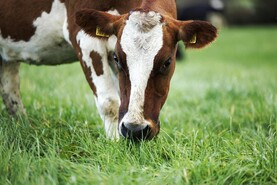Lameness: I see a high proportion of lameness in those herds still milking and grazing due to the very wet weather and long walks in the last week. Be very careful to get the cows treated as quickly as possible. Don’t have lame cows walking long distances as they will melt very quickly at this time of the year. Leave them in paddocks near the parlour or inside if that option is not available.
Grass left: There are some very heavy covers of grass on farms North and South. By heavy I mean covers over 1,500kg (fit for grazing now). I’ve no problem maybe leaving one or two paddocks with this cover if you expect a lot of cows calved in late January or early February, but leaving ten paddocks with high covers will only reduce quality, spring growth rates and long term will reduce the amount of perennial grass in the paddock.
Options some farmers are using is to split spring calving cows that have been dried off into small groups and allocate them to paddocks which need to be grazed off. You will need to put up a strip wire because otherwise paddocks will be damaged, grass walked in and more harm than good completed.
Some are using the stronger weanling heifers to clean out paddocks and again farmers are splitting these up into small groups because it is very difficult to manage large groups when weather conditions are very wet.
Soil sampling: On pages 28-29 we go through the basic steps on soil sampling. Soil fertility will no doubt be the big game changer in coming years as farmers will have to maximise growth to remain efficient. Don’t be complacent about soil sampling. Build up a strong record of what paddocks are growing or not growing and a database of soil fertility for each paddock. The more information you have, the easier and better decisions will be taken.
Plan for 2015: This week in the dairy pages we get a feel for what New Zealand dairy farmers are doing in terms of adjusting costs for a reducing milk price. Currently the New Zealand product that is being sold is making the equivalent of just over 20 c/litre. I’m not saying we need to plan for that price but that is the fact of where the market is right now. New Zealand farmers are still getting some of the bumper milk payment from last year, but that will end very soon and the new lower price will kick in. Lucky for them they are getting favourable grass growing conditions so feed purchased will be back.
Most experts suggest we need to plan for 28 to 29 c/litre next spring so you have to make your system work at that level. It’s a long way back from the 40 c/litre we have become used to this year.
Given where Ireland is in terms of milk supplied to date in this quota year, what will you do for February and March if you have already filled your quota? Many are afraid of once a day milking with freshly calved cows but it also has many fans. We will explore more in coming weeks.






 This is a subscriber-only article
This is a subscriber-only article










SHARING OPTIONS: